Hello fellow CSDN users, today we will continue our study of computer network overview. Now, let us enter the world of computer network overview together! ! !
computer network architecture
Data transfer process
Computer network performance indicators
computer network architecture

Two computer systems must work in high coordination to communicate normally. This coordination is very complicated. The computer network is actually a very complex system. How to solve a complex problem? This is like running a company. The company actually encounters many problems during the operation process, and its problems are also very complex. How can we manage a company well? Generally, we divide a company into several departments, such as the finance department, sales department, and R&D department. Each department does its own work and works together to run the company well.
From this example, we can see that we divide a company into several departments for operation. In fact, we transform a complex problem into several small, local problems, and these small, local problems Local problems are easier to study and deal with, so we also adopt a similar solution for computer networks, except that when we deal with computer networks, we use a layered approach to organize and design various protocols of computer networks.

As an example:
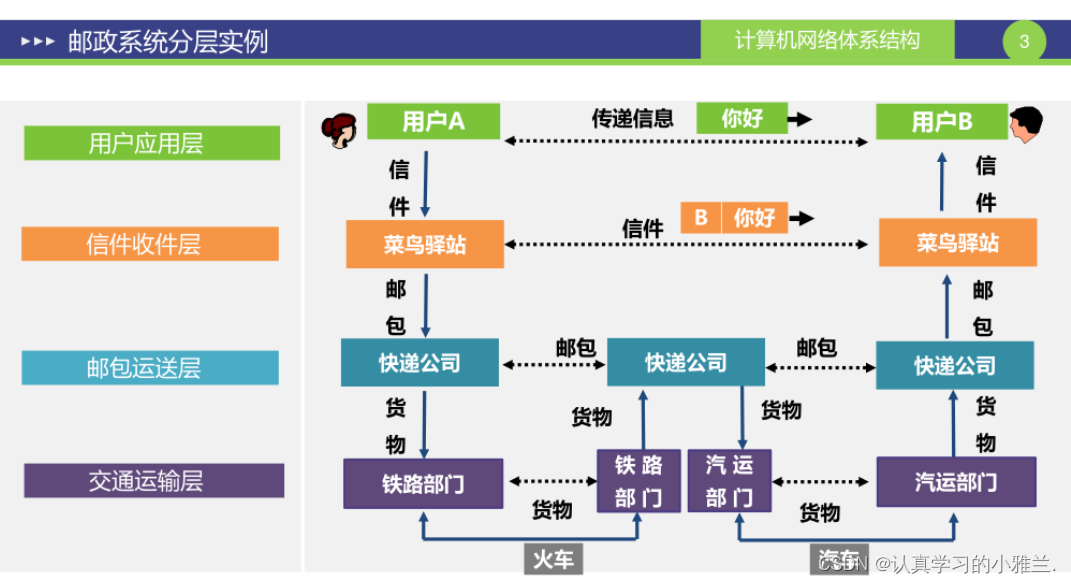
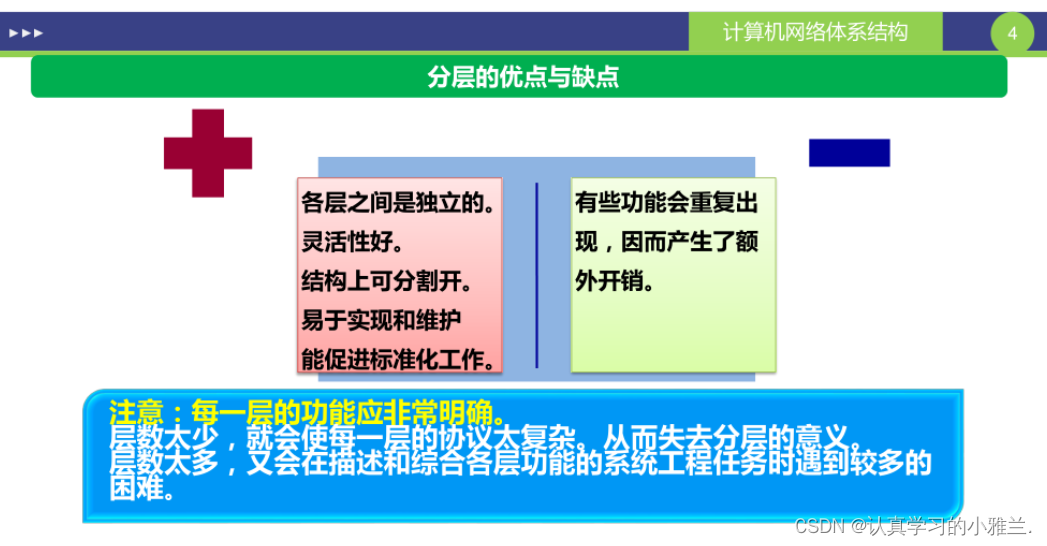

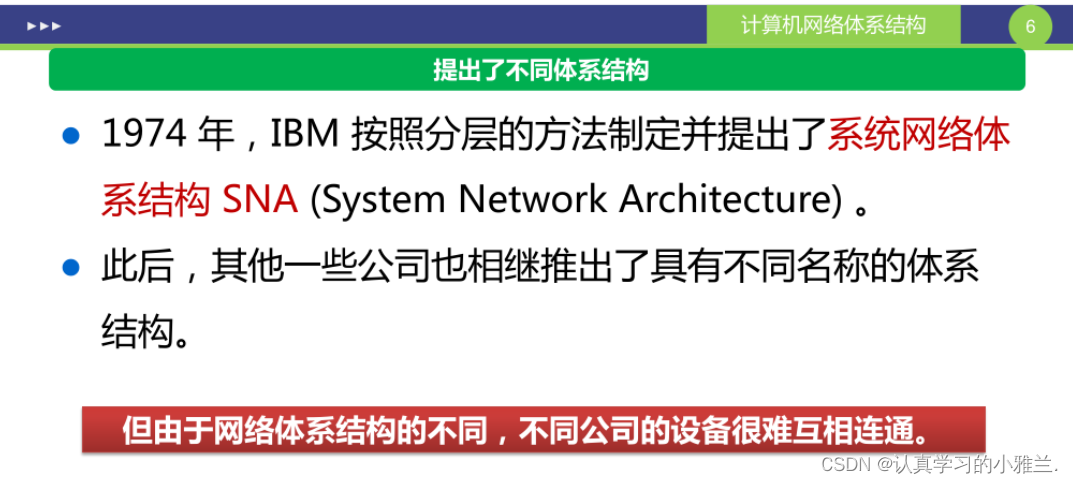
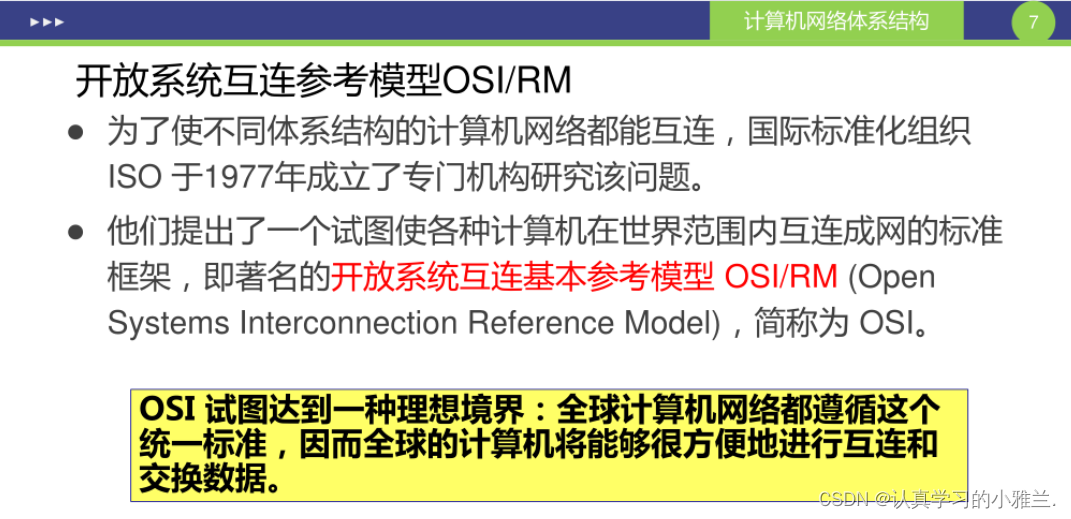
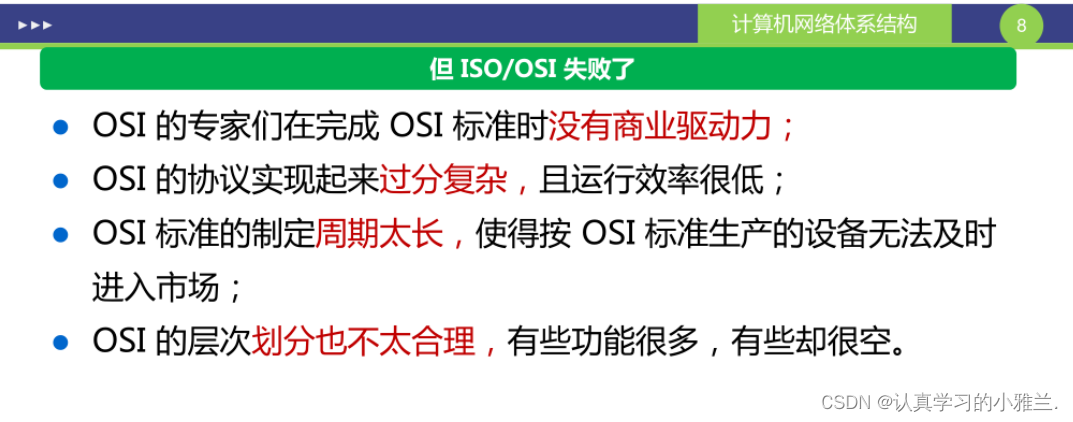

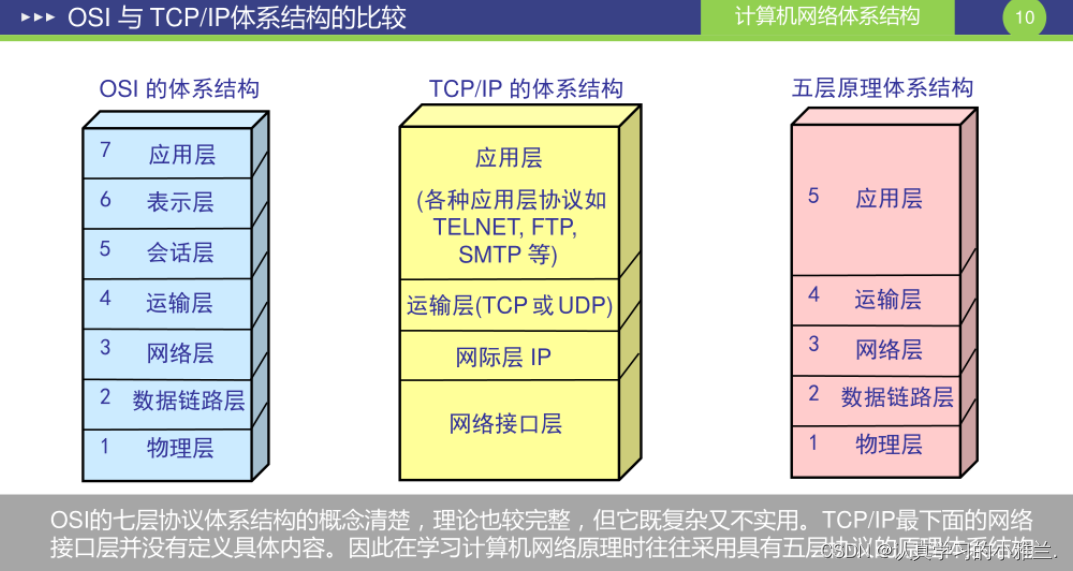
Data transfer process
We know that computer network architecture can be divided into physical layer, data link layer, network layer, transportation layer and application layer. What kind of work do these five levels accomplish?
Next, I will explain it simply layer by layer!
physical layer
The first is the physical layer. We all know that in computer networks, all digital signals are transmitted, that is, 0 and 1. The physical layer is on the transmission medium, and these bit streams are transmitted. For different types of communication lines, the physical layer needs to consider how to realize the transmission of 0 and 1 bit streams, because there are many different transmission media in the physical layer, such as twisted pairs, optical fibers, coaxial cables, and coaxial cables. Electrical signals are transmitted, while optical signals are transmitted by optical fibers. Our physical layer must try to shield different transmission media. We must consider how to achieve unified 0 and 1 bit stream transmission on different transmission media. This It's the work of the physical layer.
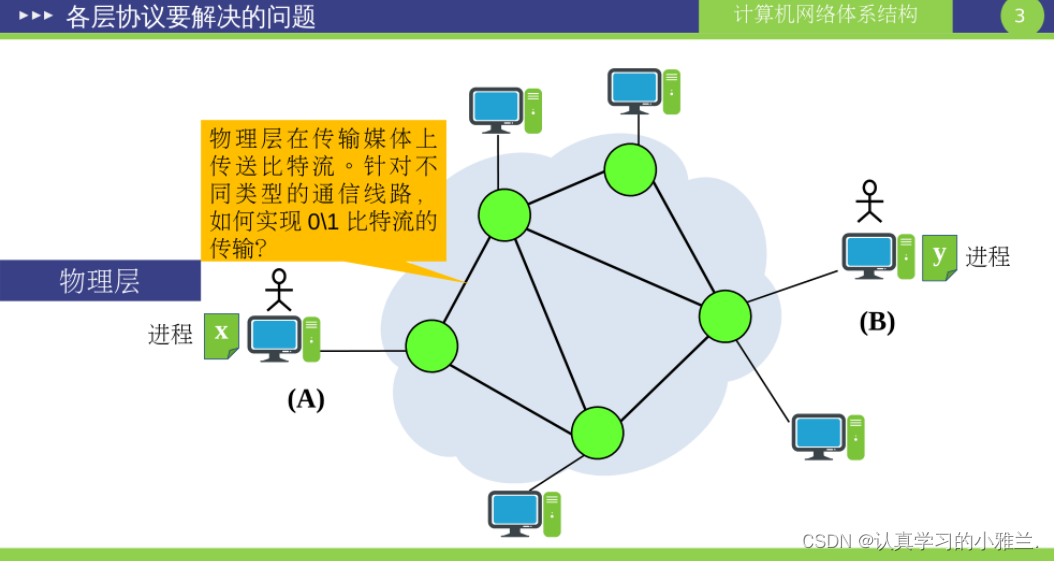
data link layer
Then there is the data link layer.
 What we're talking about here is transmitting packets from one end of the link to the other. It is not said to be from the sender to the receiver, because there are actually multiple links between the sender and the receiver, and our data link layer only guarantees the reliability of the information on one link. Transmission, who guarantees reliable transmission between the sender and the receiver?
What we're talking about here is transmitting packets from one end of the link to the other. It is not said to be from the sender to the receiver, because there are actually multiple links between the sender and the receiver, and our data link layer only guarantees the reliability of the information on one link. Transmission, who guarantees reliable transmission between the sender and the receiver?
Network layer
Then there is the network layer.

Simply put, the most important job of the network layer is to find an optimal path for the sender and receiver. This is the job of the network layer.
transport layer
Then there is the transport layer.

The transport layer provides general data transmission services for communication between processes on two hosts. It seems that the work of the transport layer is very similar to that of the network layer, and it also solves the communication between two hosts. So what are the differences between the two? What's the difference?
We can think about it, is there only one application communicating on our computer? For example, after we turn on the computer, we will open our own browser, our own QQ, and even our own game software. There are actually multiple processes communicating at the same time on the same computer. The transport layer solves the problem. The network layer is a service for communication between different processes, while the network layer solves the communication process between computers. This is the difference between the two.
Application layer
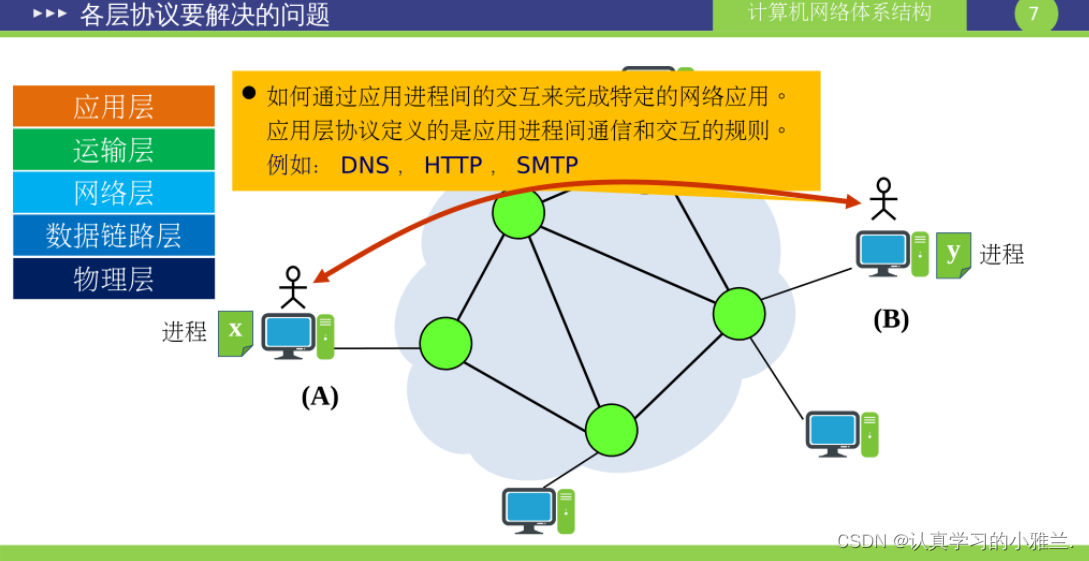
HTTP: Hypertext Transfer Protocol
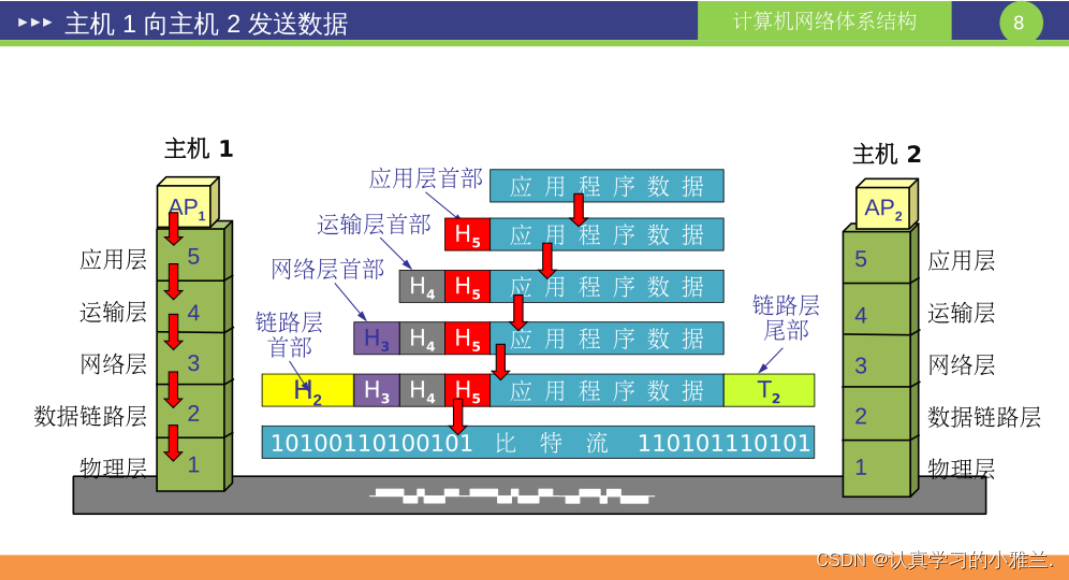
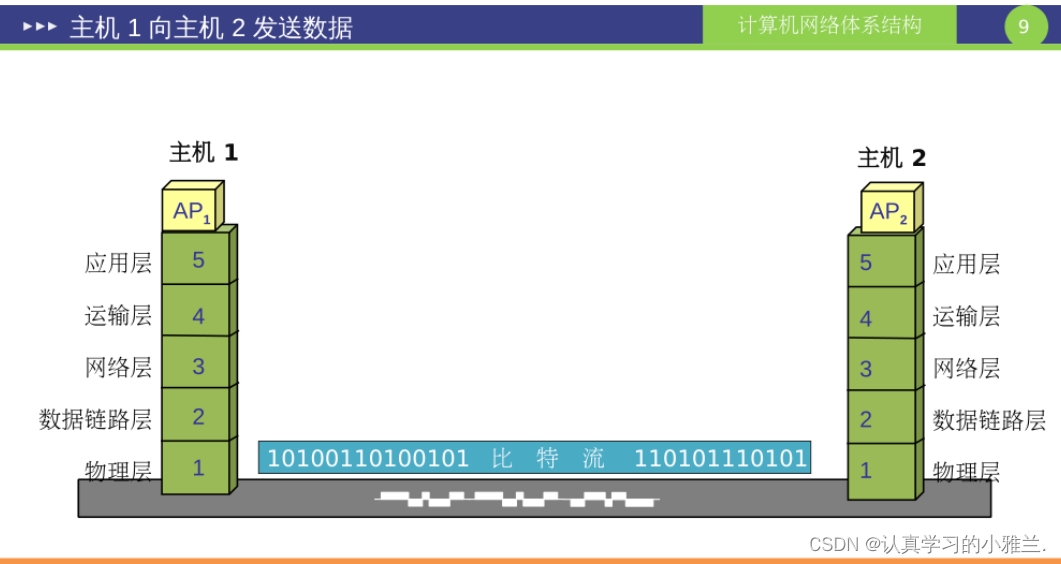
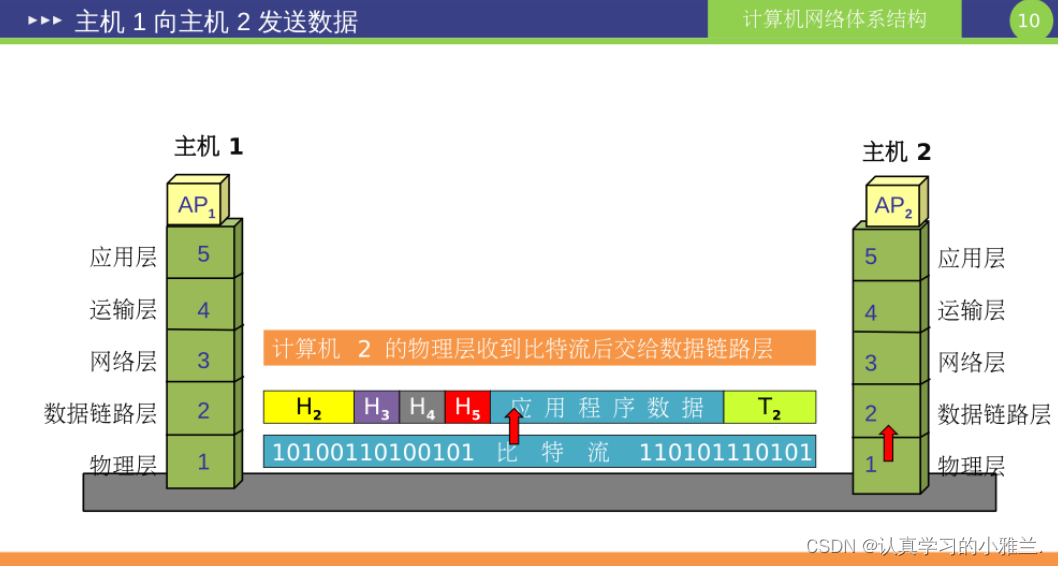


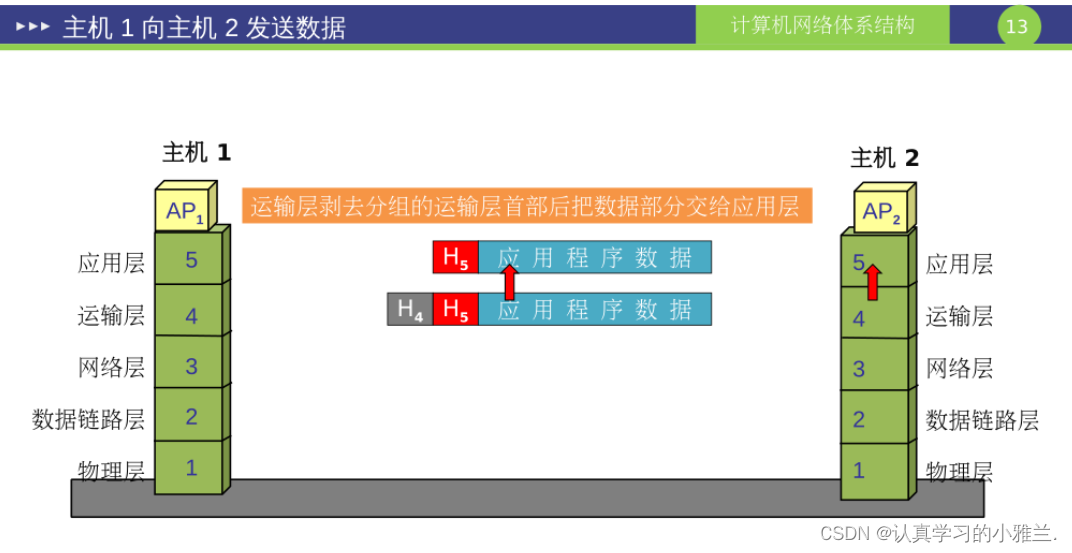
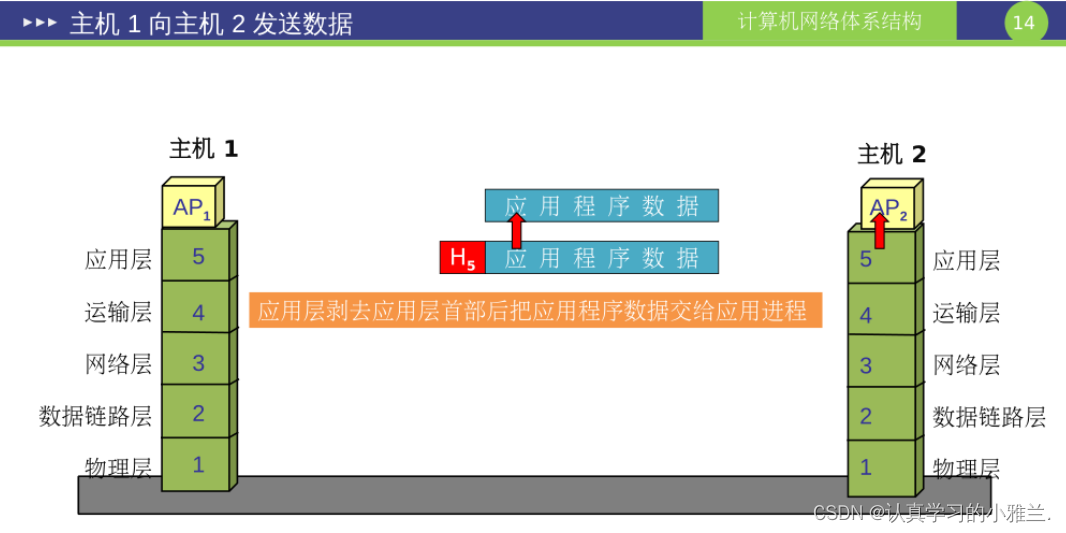

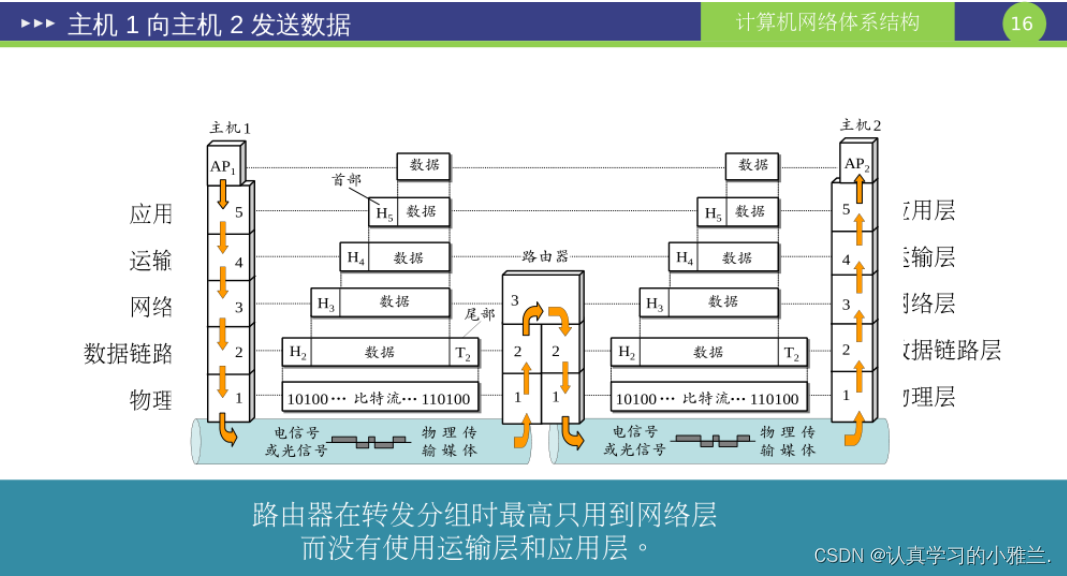
Computer network performance indicators
rate
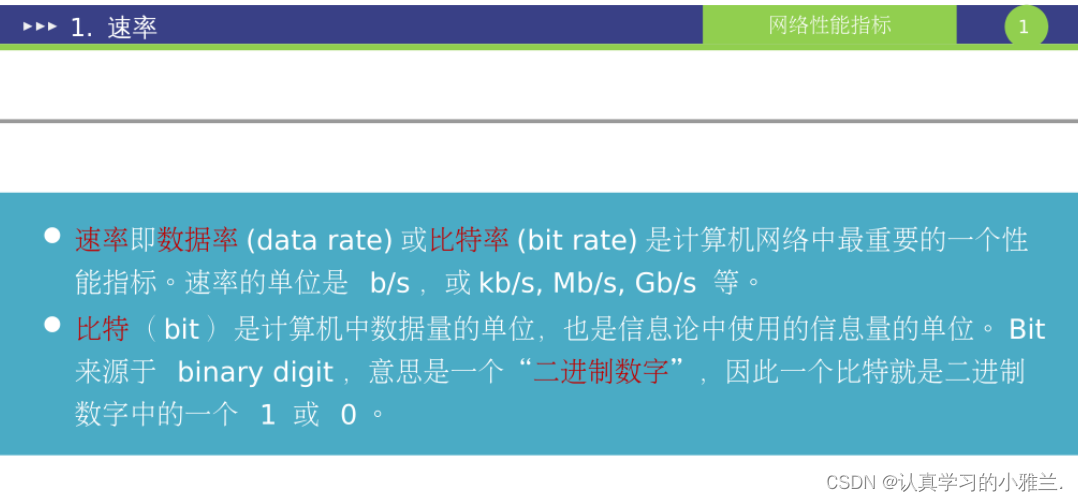
bandwidth

Throughput

Delay
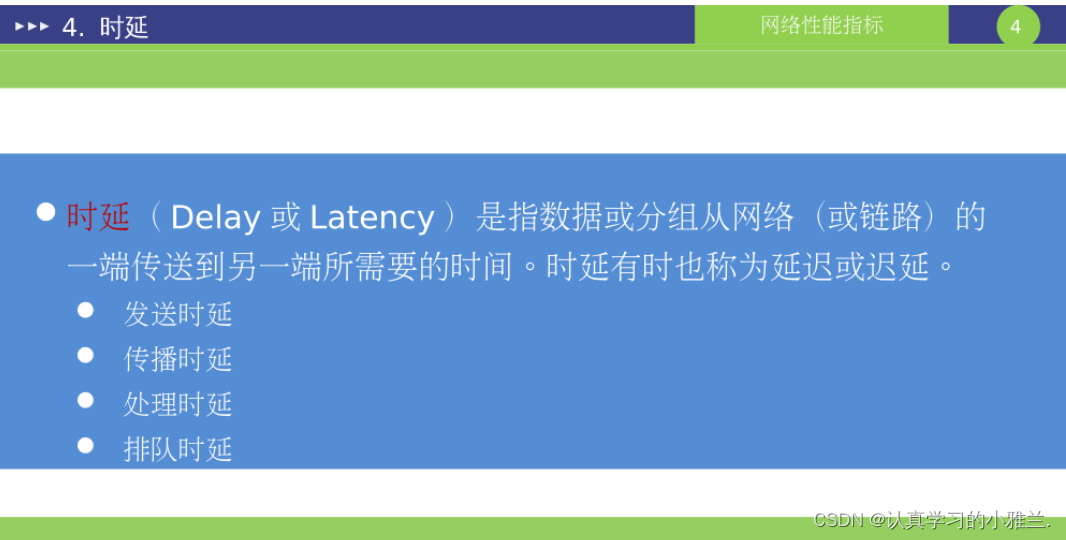

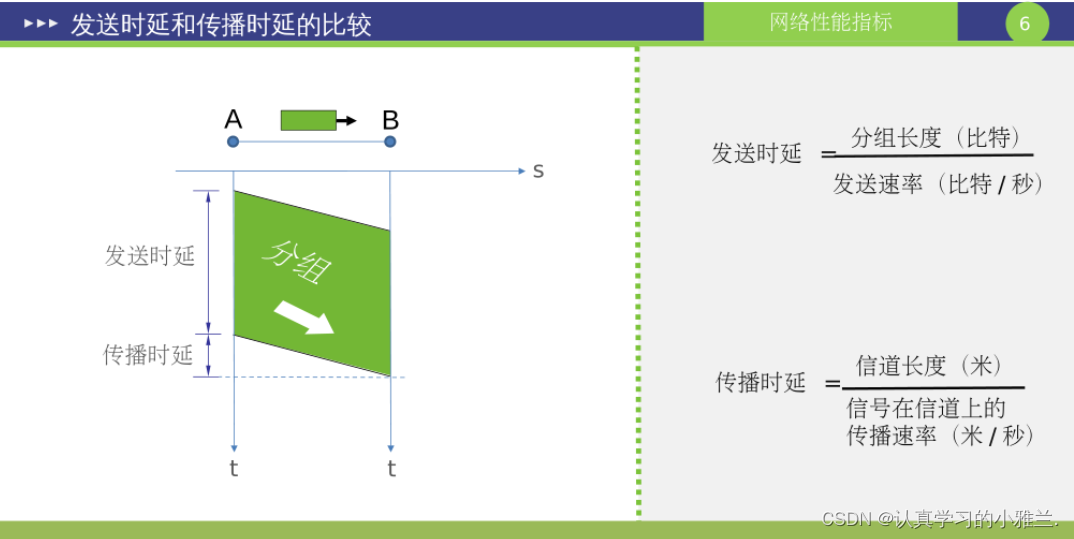

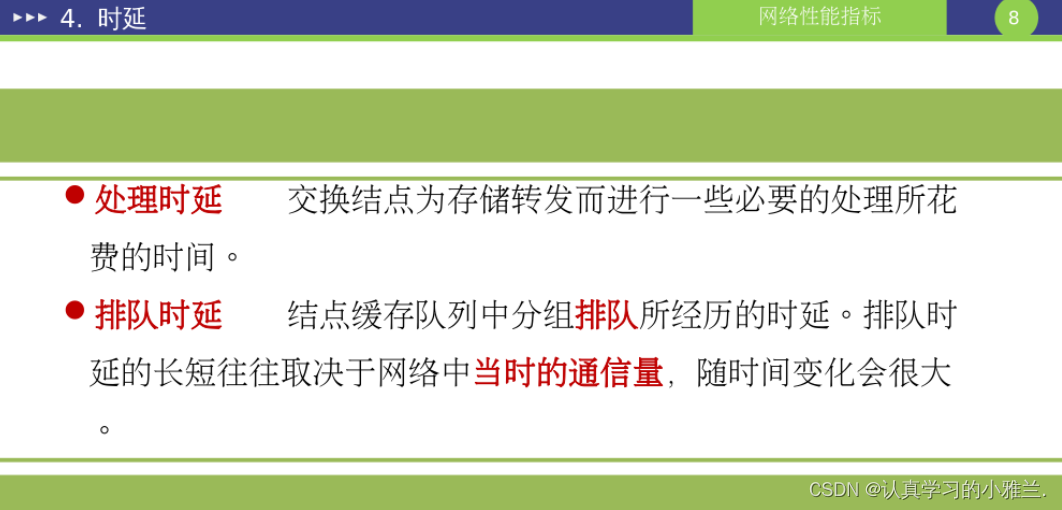
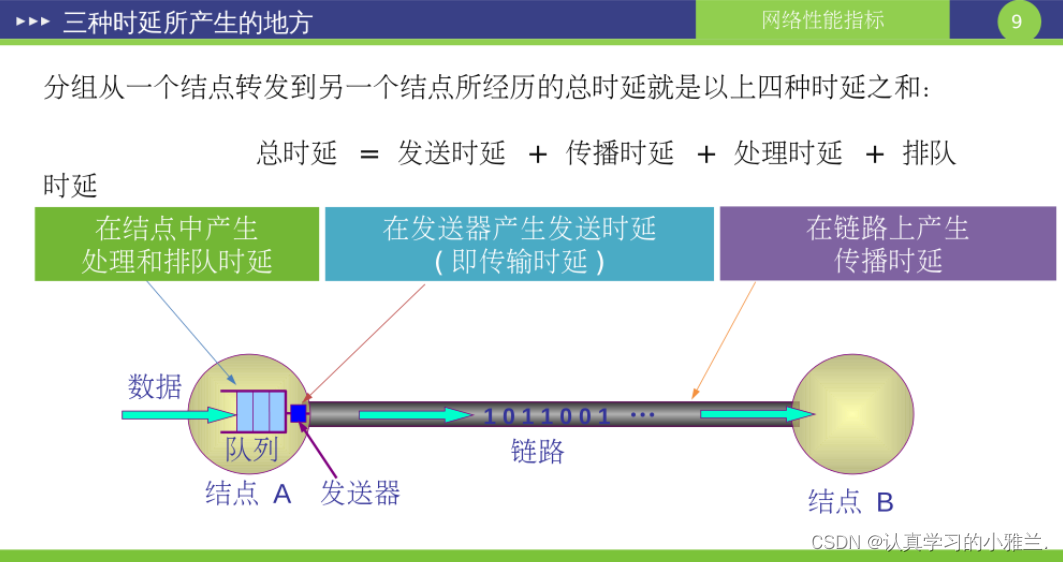
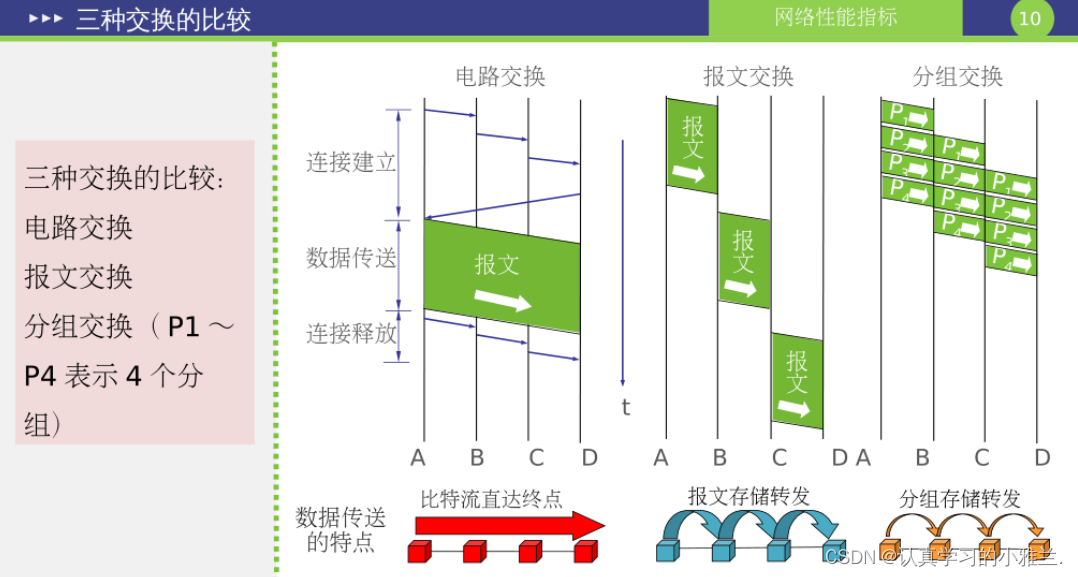
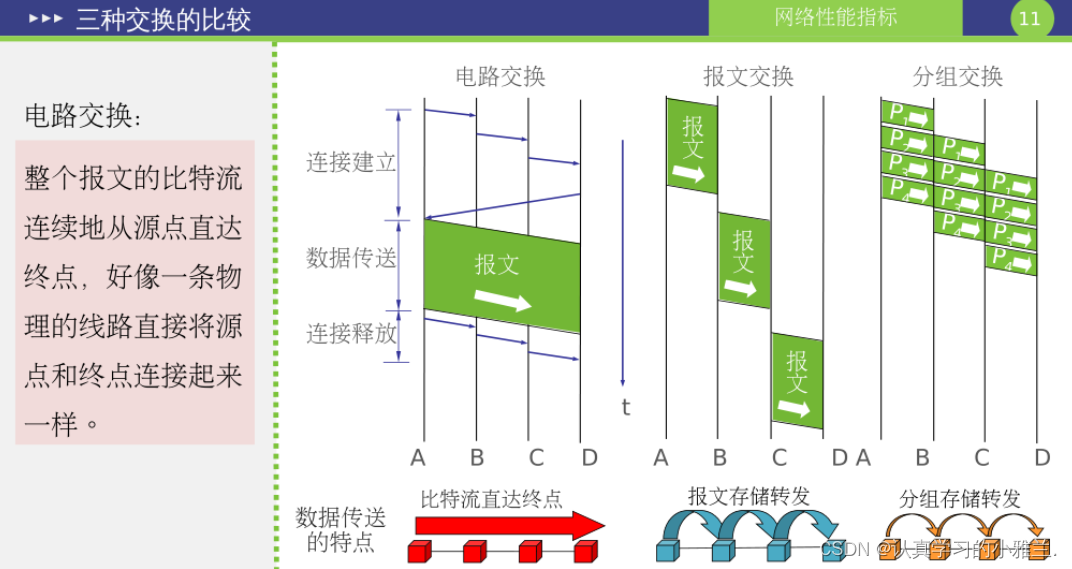
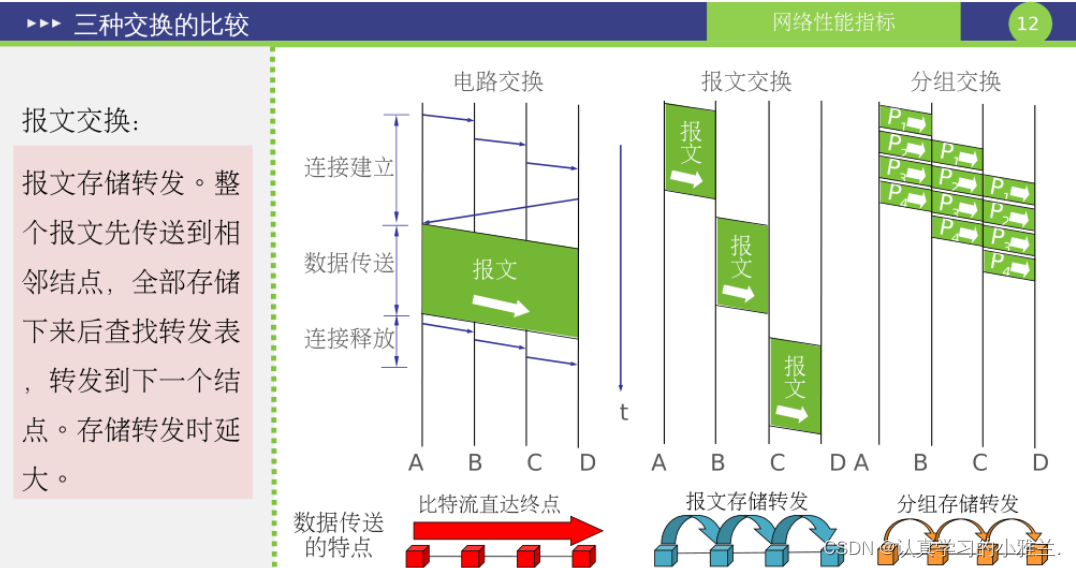

Packet loss rate
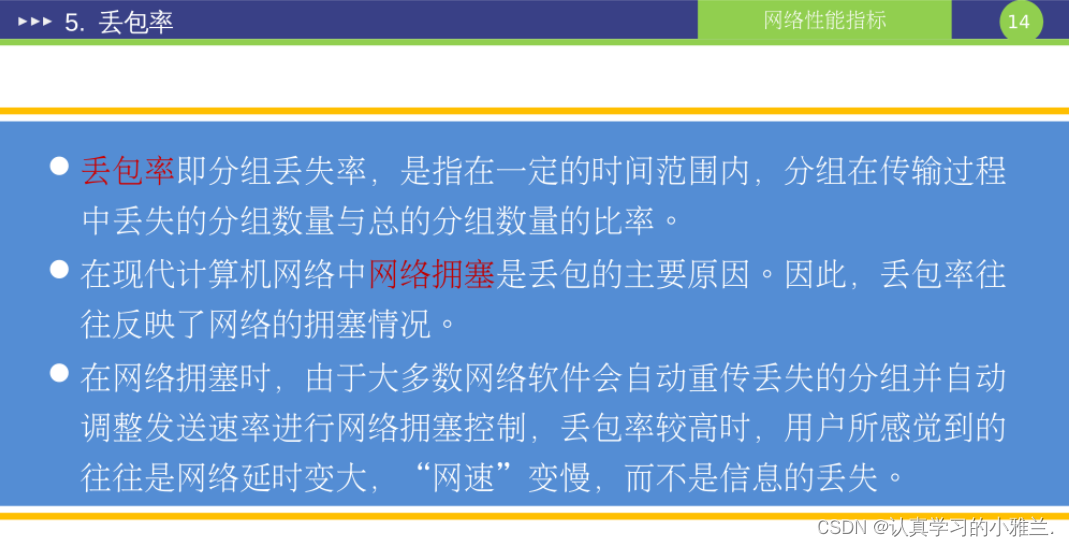
Utilization
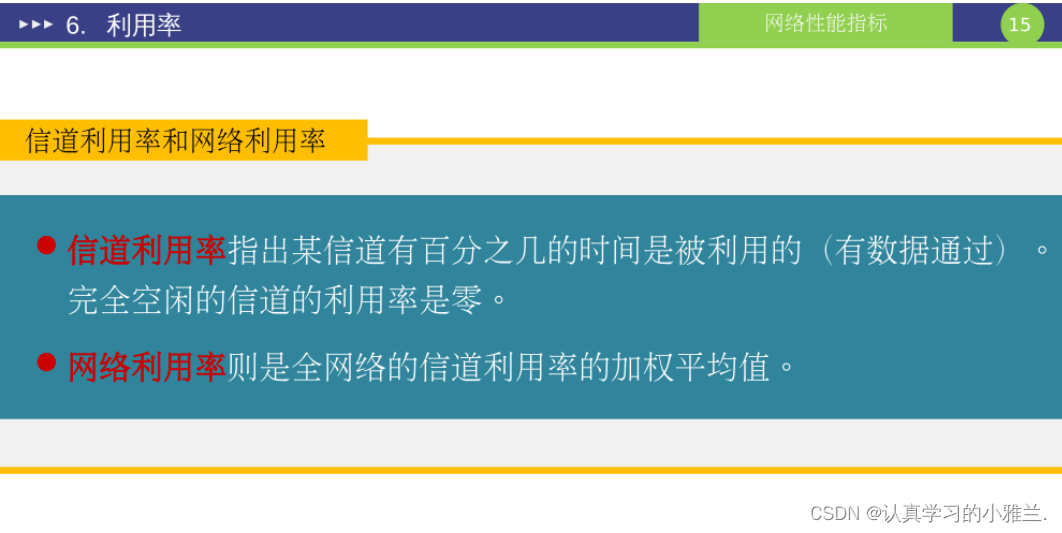
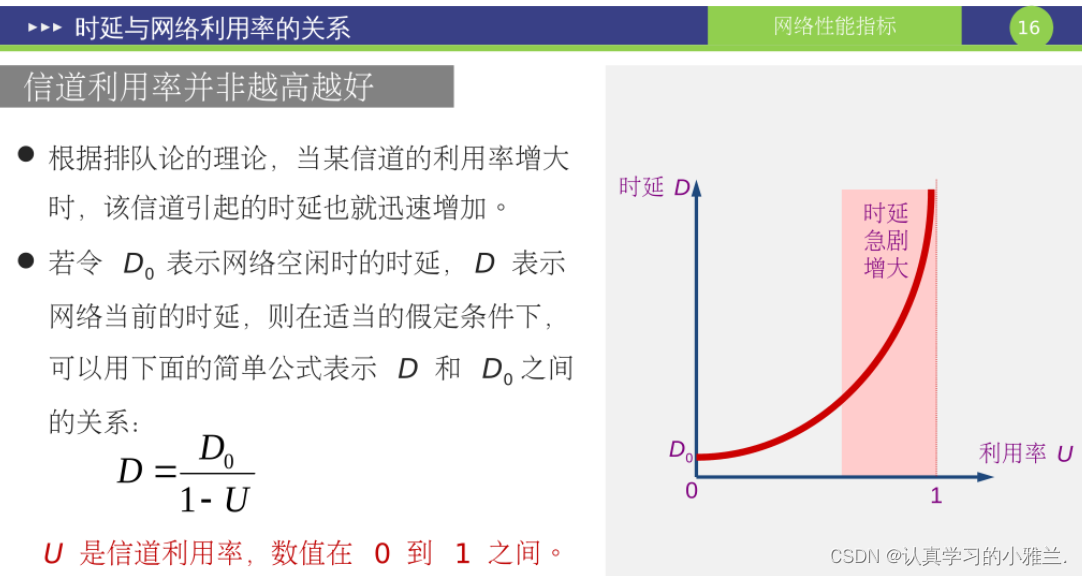
Okay, that’s it for Xiao Yalan’s computer network overview today. The exam is coming up on Monday, so come on at the end of the semester! ! !
